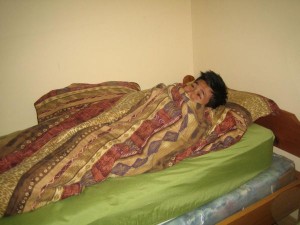Raynaud’s phenomenon is an ailment where the flow of blood to the toes, fingers, nose or ears is limited or disrupted. This occurs once the blood vessels in the feet or hands constrict which is called as vasospasms.
https://www.youtube.com/watch?v=GRk1icoPs2U
It is important to note that Raynaud’s phenomenon might accompany underlying health conditions. The vasospasms triggered by other ailments such as frostbite, arthritis or autoimmune diseases are called as secondary Raynaud’s.
The condition can manifest on its own. Those who have the condition but otherwise healthy have the primary form. Emotional stress and exposure to cold temperatures can instigate episodes of the condition.
What are the signs?
The usual indication of Raynaud’s phenomenon is discoloration of the toes, fingers, nose or ears. Once the blood vessels transporting blood to the extremities are obstructed, the affected area turns white and feels cold. There is also loss of sensation in the affected areas while the skin takes on bluish tinge.

With the primary type, there is a drop in the body temperature with minimal pain. As for the secondary type, there is intense pain, tingling and numbness in the toes or fingers. The episodes can last for a few minutes or up to several hours.
Once the vasospasm ends and the individual moves to a warm environment, the toes and fingers might throb and appear bright red. If an individual has the primary type, the same toes or fingers on each side of the body are affected at the same time. For the secondary form, the symptoms occur on one or both sides of the body.
Management
Lifestyle changes
Lifestyle modifications are essential in the treatment of Raynaud’s phenomenon. The initial line of treatment is to avoid substances that causes the constriction of the blood vessels. In most cases, this involves avoidance of nicotine and caffeine products.
Keeping the body warm and regular exercise can also prevent or lessen the intensity of some attacks. Exercise is highly beneficial in promoting good circulation and lowering the level of stress.
Medications
The doctor might prescribe drugs if the individual suffers from extended, frequent or intense episodes of vasospasms. The medications that promote vasodilation to allow the blood vessel to relax include:
- Antihypertensive drugs
- Antidepressants
- Erectile dysfunction drugs
